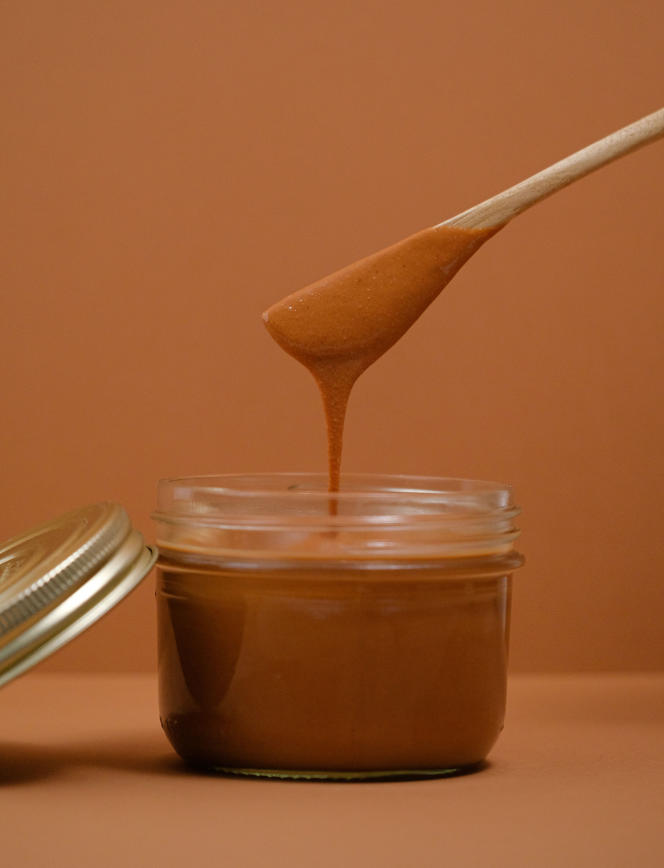Plant-based baking? The average foodie cringes. Pastry, the last refuge of indulgence, is very complicated to remain desirable without certain ingredients of animal origin: butter, milk, cream, gelling agents, etc. Almost all of us have eaten one of these vegan alternatives to a classic dessert, which, deprived of its original raw materials, ended up dry, austere, without taste or texture.
At the house of Anaïs Galpin, who notably worked for the Ladurée house in California and with Quebec pastry chef Patrice Demers, plant-based creations take on a whole new dimension. She has published a delightful specialist work, My plant-based pastry. 40 creative and tasty recipes (Editions de La Martinière, 2022), and today works as a consultant when she is not leading master classes. We find it elsewhere, Sunday September 24 at noon, at Vegetable Food Temple, where she will explain to her students for a day how to prepare a peanut chocolate bar without animal products. The event, which takes place from September 22 to 24 at the Carreau du Temple in Paris, brings together some bigwigs and pioneers of green cuisine such as Claire Vallée, Romain Meder and Julien Sebbag. If you can’t get there, here’s something to console you with these three chocolate recipes, from the book by Anaïs Galpin!
Gianduja
Gianduja is a delicious and harmonious mixture of hazelnuts, chocolate (usually milk) and sugar. You can also make a plant-based version using plant-based “milk” chocolate. This gianduja, very simple to make, goes perfectly with very gourmet recipes (crepes, waffles, brioche, etc.) and will be a hit with children for its roundness and softness.
Ingredients for a 250 ml jar
- 200 g roasted shelled hazelnuts
- 100 g of icing sugar
- 200 g of vegetable “milk” chocolate
- 20 g grapeseed oil
Melt the chocolate in a bain-marie (or in the microwave).
In a very powerful blender: blend the hazelnuts with the icing sugar and oil at full power until you obtain a homogeneous paste.
Add the melted chocolate to the blender and mix again at full power to obtain the most homogeneous, creamy and smooth gianduja possible.
Remove the gianduja into a pot (it can be filtered through a sieve to limit the number of remaining “grains” and thus make it more fluid; a small quantity of grapeseed oil – 10 to 15 g – can also be added to make it more fluid).
You have 58.02% of this article left to read. The rest is reserved for subscribers.
